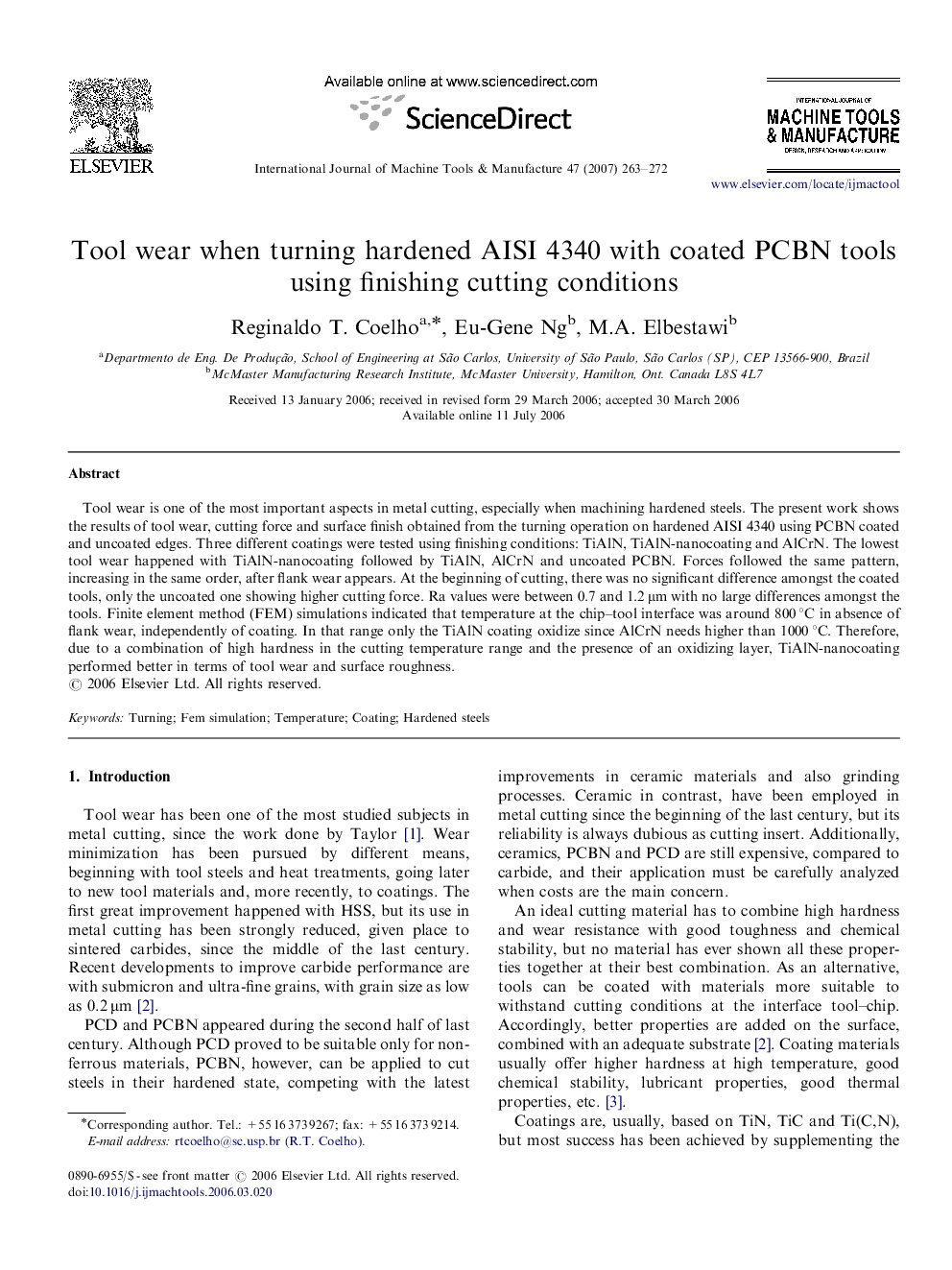| Article ID | Journal | Published Year | Pages | File Type |
|---|---|---|---|---|
| 784658 | International Journal of Machine Tools and Manufacture | 2007 | 10 Pages |
Tool wear is one of the most important aspects in metal cutting, especially when machining hardened steels. The present work shows the results of tool wear, cutting force and surface finish obtained from the turning operation on hardened AISI 4340 using PCBN coated and uncoated edges. Three different coatings were tested using finishing conditions: TiAlN, TiAlN-nanocoating and AlCrN. The lowest tool wear happened with TiAlN-nanocoating followed by TiAlN, AlCrN and uncoated PCBN. Forces followed the same pattern, increasing in the same order, after flank wear appears. At the beginning of cutting, there was no significant difference amongst the coated tools, only the uncoated one showing higher cutting force. Ra values were between 0.7 and 1.2 μm with no large differences amongst the tools. Finite element method (FEM) simulations indicated that temperature at the chip–tool interface was around 800 °C in absence of flank wear, independently of coating. In that range only the TiAlN coating oxidize since AlCrN needs higher than 1000 °C. Therefore, due to a combination of high hardness in the cutting temperature range and the presence of an oxidizing layer, TiAlN-nanocoating performed better in terms of tool wear and surface roughness.
